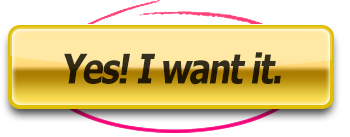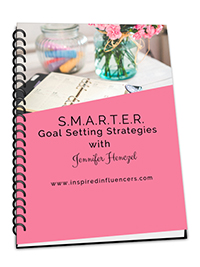
To help you get started with this quickly, I created a SMARTER Goal Planning Worksheet for you. Do you want it? Say “Yes” out loud.
In order to turn your ideas into actions, and actions into royal results, you must focus on what you want, not on what you don’t want.
We do that with SMARTER Goal Planning
Split your goals into achievable tasks, and schedule those tasks with very specific timelines. Then, before you know it, you’ll be achieving more, and finally get the results you want, one step at a time. Try it!
You can do just about anything if you know how to set goals, but most of us don’t. It takes quite a bit of planning and if you’re not a planner, it can be tough. That’s why we have the SMARTER method for setting goals:
- Specific
- Measurable
- Action-oriented
- Realistic
- Time-based
- Evaluate
- Results
Is your goal SMART? Let’s take a closer look at this method and what these words mean.
Specific
Being specific helps you focus on exactly how you’re going to reach your goal. Start by creating a statement that explains what you’ll do. Use the phrase ‘I will’. Now, ask yourself the what, why and how of this goal to refine it. Make it as detailed as possible. This will help you generate the sub-goals and steps that you need to take to get there.
Measurable
There needs to be some way to know when you’ve reached your goal. The results have to be measurable. If you want to make more money, for example, choose a specific dollar amount that you’d like to be making per year. The great thing about making goals measurable is that you can easily see your progress and this keeps you motivated to work on it.
Action-oriented
Without action, goals are never attained. Break your goals down into smaller goals, and then specific actions you can take to make them happen. Think about things you can do today that will bring you closer to achieving your goal. Also plan actions you can take when things don’t go as planned. During the course of working your way toward your goal’s attainment, set aside time to reflect on your actions and assess the results. If you’re not getting the results you want, make the necessary changes.
Realistic
Goals only work when they’re realistic. What this really means is that you can see the big picture of what you need to do. Ask yourself whether or not this goal is something you can do – or even want to do. Take some time to think about your strengths and weaknesses. Which parts are going to be easy and which will be difficult? Develop a plan for the challenges you’re going to face.
Time-based
Set up a detailed time-frame for when your goal and all of your sub-goals are going to be achieved. Since this is hard to estimate if you’ve never done it before, make the best guess possible and change your time-frame slightly if you need to. We often find that it takes longer than we planned. However, you need to have a definite deadline to add urgency to it.
A great way to plan out your goal is to use mind maps. Mind maps are visual tools used for brainstorming and setting out tasks. At the center is your main goal and all of your sub-goals branch out from it. You can then define timeframes and exactly how you’re going to reach all of your sub-goals. Mind maps put goal planning in a visual format that makes it easy for you to see the big picture.
Evaluate
You must assess whether your goals are working and producing the results you want. Evaluating your goals regularly will help you to stay agile and better equipped to respond to internal or external changes.
Results Oriented
Your goals must be focused on results and outcomes. As soon as you identify a goal, break it out into tasks, and schedule those tasks to ensure they are completed. Step-by-step you will achieve your goal.










Comments are closed.